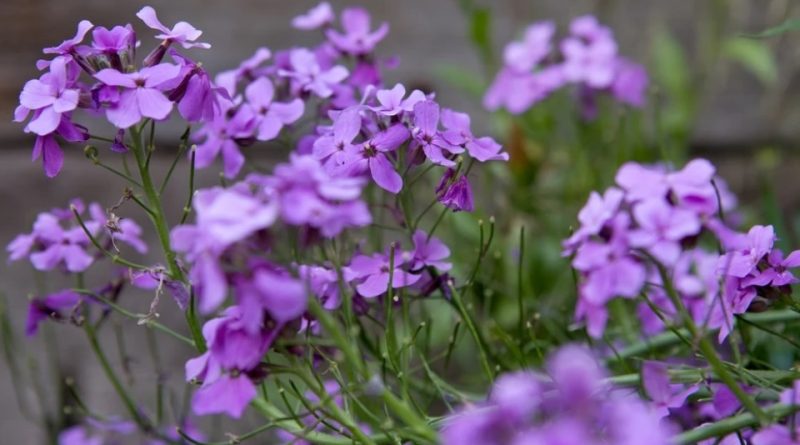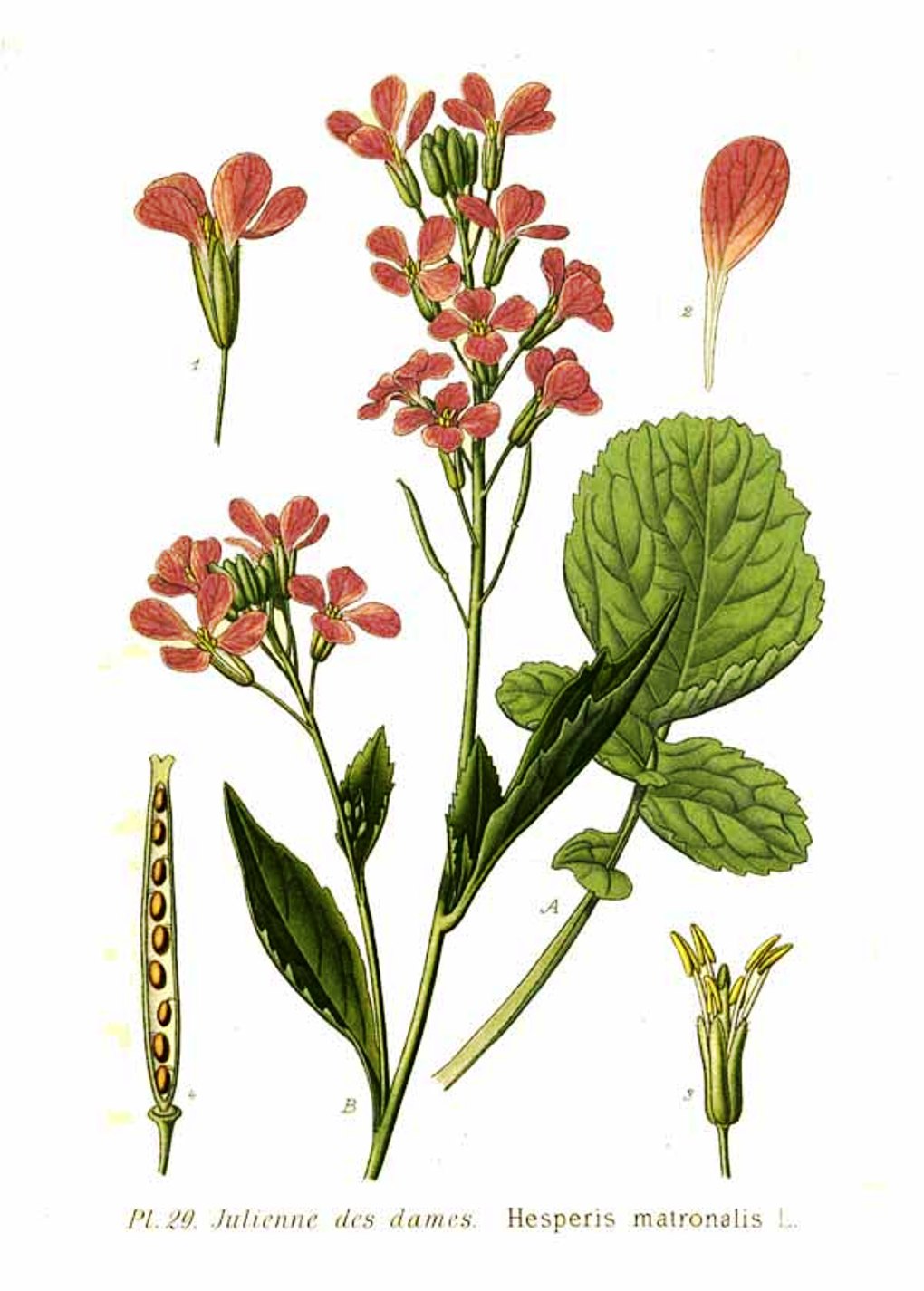Hesperis matronalis
Hesperis matronalis
The dame’s rocket or damask-violet (Hesperis matronalis L.) is a herbaceous species belonging to the Brassicaceae family.
Systematics –
From a systematic point of view it belongs to:
Eukaryota Domain,
Kingdom Plantae,
Magnoliophyta Division,
Magnoliopsida class,
Capparales Order,
Brassicaceae family,
Genus Hesperis,
H. matronalis species.
In Italy there are two subspecies:
– Hesperis matronalis L. subsp. matronalis;
– Hesperis matronalis subsp. nivea (Baumg.) E.P. Perrier.
Etymology –
The term Hesperis comes from the Greek ἑσπερίς hesperís vespertino, serotino: due to the property of this plant to emit an intense perfume in the early evening and evening hours.
The specific epithet matronalis comes from a married woman matron, due to the custom in use among Roman matrons of adorning their hair with garlands of flowers from these plants.
Geographic Distribution and Habitat –
Hesperis matronalis is a plant native to Eurasia and with a natural distribution centered on the regions surrounding the Black Sea, introduced in Viennese gardens from Asia Minor; in Italy it came from France; today the species is present, with two subspecies, in all the regions of Italy except in Sardinia and perhaps Emilia-Romagna.
Its natural habitat is that of humid woods and ravines, in clearings and on the fresh edges of deciduous woods, on the edge of hill roads with preference on limestone soils; from 0 to 1200 m a.s.l ..
Description –
The dame’s rocket is a more or less pubescent perennial or biennial herbaceous plant.
It has an erect, cylindrical stem, 50 – 90 cm high, branched upwards.
The basal leaves are alternate, slightly shaggy, petiolate, toothed or lyrate margin (1 – 2 x 8 – 16 cm) and very small sessile glands; the cauline gradually smaller, lanceolate with a sub-null petiole semiamplessicauli and a serrated margin.
The flowers are fragrant, carried by subcorimbose racemes, initially very dense and elongated after anthesis. The calyx has 4 hairless sepals, conniving and slightly shorter than the nail of the petals. The petals are 4 cross-shaped, pinkish-violet spatula with an oval flap and a license of about 1 cm; 6 stamens and stigma divided into 2 elements.
The fruits are siliques of 30-80 x 1,5-3 mm, erect-arched, thorulous, generally glabrous, rounded valves, 1,5-2,5 mm style. Seeds of 2-3.5 x 1.3 mm.
Cultivation –
Hesperis matronalis has been cultivated for a long time and grows best in full sun to partial shade where the soils are moist with good drainage.
It is an easy, fast growing plant, it loves slightly moist, rich and deep soils and sunny exposures. It is short-lived, but has the ability to self-disseminate easily. After flowering, the inflorescences are cut off. In winter it loses the aerial part, which reappears in late spring.
Hesperis matronalis propagates by seed, but some plants propagate by cuttings or by division of the tufts.
Although this plant is considered very attractive in ornamental cultivation it has proved to be an invasive plant in some areas of the world such as in North America.
Customs and Traditions –
Hesperis matronalis was introduced in Europe, coming from Asia Minor, in the Viennese gardens. It came to Italy through France.
In the nineteenth century. the phytotherapist Cazin experimented with all the properties of the plant.
The species has always found favor with gardeners for adorning flower beds.
These plants are biennial or short-lived perennials, native to Eurasia and grown in many other areas of the world for their attractive spring-blooming flowers.
The young leaves of this plant are rich in vitamin C and can be eaten in salads and have a slightly bitter taste. The seeds can be sprouted and eaten in salads as well.
The infusion of the leaves has stimulating, antidiarrheal, sweat, diuretic and expectorant properties. Fresh leaves are rubefacient.
The seeds contain a high percentage of oil which, however, is acrid and bitter to the taste. Freeze at the same temperature as olive oil.
You can drink the juice of the plant, even if it has an acrid taste, mixed with milk, or with wine “after having macerated the leaves”.
The poultice made from the leaves causes the abscesses to mature.
Preparation Method –
The young leaves of this plant can be eaten in salads, as well as the seeds that can be sprouted and also eaten in salads.
An infusion is prepared with the leaves, and you can also drink the juice of the plant, even if it has an acrid taste, mixed with milk, or with wine “after having macerated the leaves”.
With the leaves you can prepare a poultice made to mature the abscesses.
Guido Bissanti
Sources
– Acta Plantarum – Flora of the Italian Regions.
– Wikipedia, the free encyclopedia.
– Useful Tropical Plants Database.
– Conti F., Abbate G., Alessandrini A., Blasi C. (ed.), 2005. An annotated checklist of the Italian vascular flora, Palombi Editore.
– Pignatti S., 1982. Flora of Italy, Edagricole, Bologna.
– Treben M., 2000. Health from the Lord’s Pharmacy, Advice and experiences with medicinal herbs, Ennsthaler Editore.
Warning: Pharmaceutical applications and alimurgical uses are indicated for informational purposes only, they do not represent in any way a medical prescription; therefore no responsibility is taken for their use for curative, aesthetic or food purposes.


